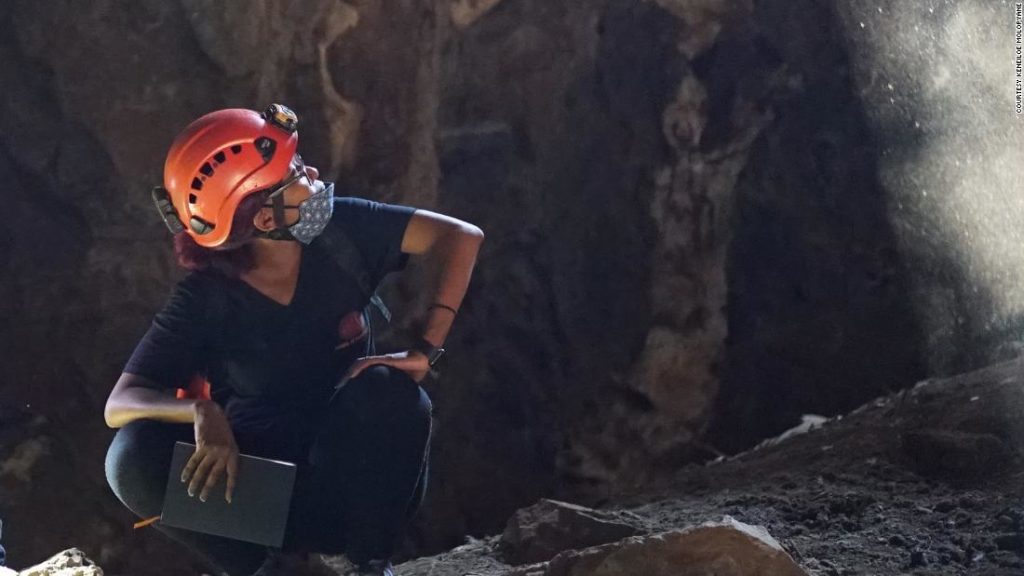“I often don’t respond to that name,” she says. “I respond to ‘Bones.'”
It’s a harrowing journey not for the faint of heart — requiring the ability to squeeze through 18-centimeter holes (less than the diameter of a full size football) and work in very dark, cramped conditions 30 meters underground.
“We were really put in very extreme situations, crawling through very tight tunnels,” Molopyane says. “I’ve had my butt stuck, I’ve had my head stuck and it’s a challenge not to panic — but also, you learn a lot about yourself and inner strength in those conditions.”
Fulfilling a childhood dream
To say Molopyane is living out her childhood dreams is an understatement.
Born in Benoni, a small mining town east of Johannesburg, she was raised by parents who are both medical doctors, helping her form a connection to skeletons and medicine at an early age.
“It was very rare to have a Black academic stand in front of a classroom full of students of which I was no more than a couple of years older,” she says. It also allowed her to teach them how to think differently about archaeology and that there’s “more to it than just stone, tools or fossils.”
Earlier this year she left her post as curator to join the Centre for the Exploration of the Deep Human Journey (CEDHJ) at Wits University, where she is the first postdoctoral research fellow in the unit, she says.
One thing the intrepid explorer hasn’t done is forgotten what she represents as a young girl with a dream and a successful woman with a career in science.
“In some ways I have become the transformation we want to see in the sciences,” Moloypane says, while also being quick to point out that she is all about action. “A lot of time has been spent talking about transformation in the palaeosciences. I’m not really one to talk — I prefer to actually do it.”
“I solve mysteries from the past where people are not around to answer those questions, and I look for those clues,” she adds. “That’s my purpose in life and I really love it.”
You may also like
-
Afghanistan: Civilian casualties hit record high amid US withdrawal, UN says
-
How Taiwan is trying to defend against a cyber ‘World War III’
-
Pandemic travel news this week: Quarantine escapes and airplane disguises
-
Why would anyone trust Brexit Britain again?
-
Black fungus: A second crisis is killing survivors of India’s worst Covid wave

